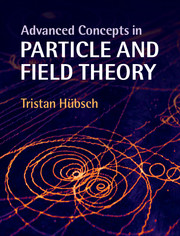2 - Fundamental physics: elementary particles and processes
from I - Preliminaries
Summary
This chapter serves to familiarize the Student with the physics of elementary particles, where new concepts are introduced in their historical context and without a precise, technical definition. The subsequent chapters will clarify these concepts with more details, examples and applications.
2.1 The subject matter
The task of elementary particle physics is explaining of what and how the World is fundamentally made. Amazingly, and almost exactly in a Democritean sense, substance (tangible matter) comprises tiny particles, and our task includes a coherent classification:
both a systematic inventory of these “elementary particles,”
and an understanding of the “elementary processes” between them, i.e., their “fundamental interactions.”
In principle, these fundamental interactions determine how collections of otherwise independent elementary particles bind into ever larger structures, to macroscopical and even astronomical proportions. However, all except the teeniest in this hierarchy of structures are outside the scope of this subject.
One must actively keep in mind that the seemingly homogeneous and continuous substance consists of only a few types of particles, amongst which each one occupies but a tiny volume, and between which most of the space is practically empty. Less than a trillionth of the volume of any given substance is occupied by the particles forming the substance. Corresponding to their tininess, these particles come in fantastic numbers, and these countless copies are all identical. Not only “practically equal,” but two particles of the same kind really cannot possibly be distinguished from one another: any one of the 1029−30 electrons in our body is identical and exchangeable with any of the other electrons. It is absolutely impossible to distinguish one electron from another, except by the state in which an electron is and by its interactions with the rest of the considered system. The same holds for protons and neutrons.
We will see that elementary particles are determined by their types of interaction with other particles.
- Type
- Chapter
- Information
- Advanced Concepts in Particle and Field Theory , pp. 37 - 80Publisher: Cambridge University PressPrint publication year: 2015

